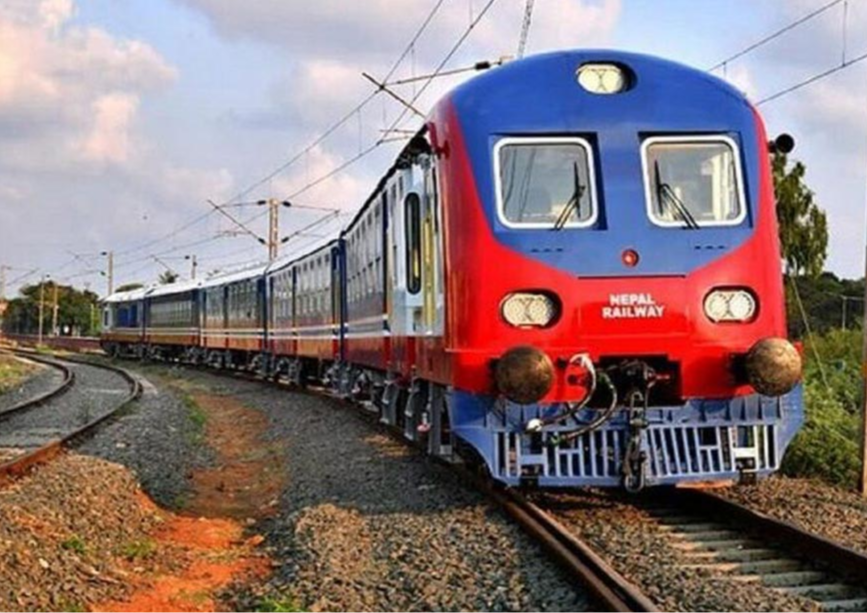-
CENTRES
Progammes & Centres
Location
The growing China-India rivalry in rail connectivity in Nepal can could potentially drive advancements in its linkages. Nevertheless, Nepal should approach this situation with caution.

For the last several decades, India has extended enormous cooperation to Nepal for the development of infrastructural projects, including in the railway sector. The history of Indo-Nepal cooperation in the railway sector goes as far back as almost 100 years, but lately, China has also started exhibiting its interest in extending the Chinese rail line with Nepal through Keyrung in Tibet to Kathmandu, the capital city of Nepal. With regard to developing a railway network with its neighbours, India has moved a step further and is likely to start construction work for connecting its border town Raxaul to Kathmandu because it has already completed the Detailed Project Report (DPR) for this project.
The 39-kilometre stretch of the Nepal Government Railway line that the British built in Nepal in 1927 to link its Raxaul with Amlekhganj (Nepal) was the first narrow gauge railway line in Nepal. A decade later in 1937, the British helped Nepal develop the second narrow gauge railway line called Janakpur-Jaynagar Railway to connect its border from Jaynagar in in Bihar to Janakpur, the religious centre of Nepal. In 1957, the Koshi Railway line was developed to carry stones and gravel from Dharan and Chatra up to the construction site of Koshi Barrage, which was also linked to Birpur and Bhimnagar in India.
A decade later in 1937, the British helped Nepal develop the second narrow gauge railway line called Janakpur-Jaynagar Railway to connect its border from Jaynagar in in Bihar to Janakpur, the religious centre of Nepal.
After the construction of the Tribhuvan Highway in the 1950s that connected Raxaul with Kathmandu, the Raxaul-Amlekhganj railway line turned out to be non-functional. Similarly, the Janakpur-Jaynagar railway was also closed in the 2000s due to the lack of proper maintenance and repair work. However, at the request of the Nepalese government, the Indian government replaced the old narrow gauge railway line with a broad gauze railway line between Janakpur and Jaynagar and extended it further to Bijalpura, which is likely to be extended up to Bardibas. Till July 2023, the passenger railway service was made operational on a 52-km section of the Jayanagar-Bijalpura-Bardibas cross-border rail line. India provided a grant assistance of INR 783.83 crores for the construction of this cross-border railway line.
On the other side, China started talking with the concerned authorities in Nepal to build the Kerung (Tibet)-Kathmandu railway. After Nepal and China signed the Belt and Road Initiative (BRI) agreement in 2017, the two countries signed an MOU on 21 June 2018, on the cooperation of in Railway Project when K.P. Sharma Oli was the Prime Minister of Nepal. But later due to the outbreak of the COVID-19 pandemic when the border between the two countries was almost closed, the DPR of the trans-Himalayan railway project could not begin.
In an important development, however, Nepal allowed China to conduct a detailed feasibility study of the trans-Himalayan railway project in 42 months as soon as Pushpa Kamal Dahal ‘Prachanda’ became Prime Minister for the third time in December 2022 in Nepal. Immediately afterwards, China agreed to release grant assistance of INR 209.37 billion to do this job. Since then, the Chinese technical team has been working in Nepal. The expectation was that the Chinese team would complete an aerial survey of the proposed Kerung-Kathmandu Cross-Border Railway by the end of December 2023.
India remained a silent spectator when Nepal and China were in regular touch with each other to develop a working modality for conducting the DPR for the construction of the trans-Himalayan railway project.
Initially, India remained a silent spectator when Nepal and China were in regular touch with each other to develop a working modality for conducting the DPR for the construction of the trans-Himalayan railway project. But later to counter the Chinese move, India became more active in constructing the railway line between Raxaul and Kathmandu. Preliminary estimates suggest that it will take five years for India to complete the construction work on this railway line of 171 km in which as many as 31 tunnels and several bridges would have to be built in the difficult hilly terrain of Nepal. The total investment cost of the project is estimated at INR 4,000 crores.
Several Nepalese experts, however, believe that the construction of the trans-Himalayan railway between Kerung and Kathmandu is most challenging on technical and financial grounds. The difficult terrain of the Himalayas and the environmental sensitivity of this region pose a formidable barrier to giving concrete shape to this project. The pre-feasibility study of the project shows that 95 percent of the Nepal section of the 73 km railway network between Kerung and Kathmandu needs tunnelling that could cost the nation about US$3-3.5 billion.
Considering geographical and engineering-related issues, most of the experts have suggested that Nepal should focus on developing road connectivity rather than railway connectivity between Keyrung and Kathmandu. Challenging the rationale of the Sino-Nepal railway link, former Minister and Nepali Congress senior leader Minendra Rijal said, “What will we export to China and what will we import from Tibet through the railroad? So let’s build roads instead.”
The pre-feasibility study of the project shows that 95 percent of the Nepal section of the 73 km railway network between Kerung and Kathmandu needs tunnelling that could cost the nation about US$3-3.5 billion.
Although talks on building the Kerung-Kathmandu railway started much before the Raxaul-Kathmandu project, India has surpassed China at least at the initial stage in preparing the DPR for the Raxaul-Kathmandu railway line. India has already completed the DPR for the Raxaul-Kathmandu cross-border railway line; while China is still in the initial stage. Of course, Nepal needs rail connectivity both with China and India, but it should not be at the cost of national interest. Being aware of this fact and to avoid any chance of falling into a debt trap, the previous government under Sher Bahadur Deuba had already made Nepal’s stand on this issue clear that it would accept the railway link with China only on the condition that it was built through grants and not loans.
Such a rivalry between Nepal’s two neighbours, India in the south and China in the north, might help Nepal develop its linkages with the two countries, but it would have its pros and cons. It is yet to be seen how the present government in Nepal takes the support of both its northern and southern neighbours in developing railway links with them without affecting the country’s national interest in the long-term perspective.
Hari Bansh Jha is a Visiting Fellow at the Observer Research Foundation
The views expressed above belong to the author(s). ORF research and analyses now available on Telegram! Click here to access our curated content — blogs, longforms and interviews.

Hari Bansh Jha was a Visiting Fellow at ORF. Formerly a professor of economics at Nepal's Tribhuvan University, Hari Bansh’s areas of interest include, Nepal-China-India strategic ...
Read More +